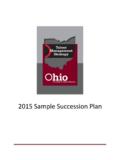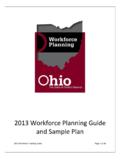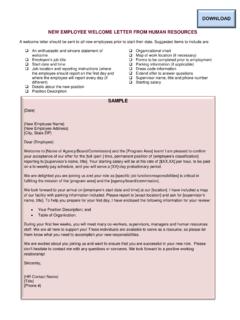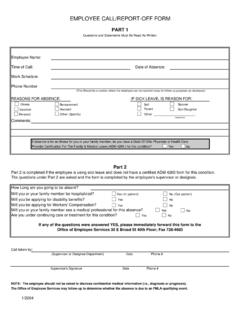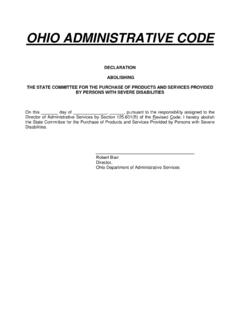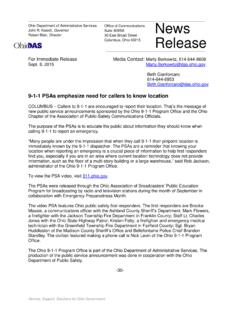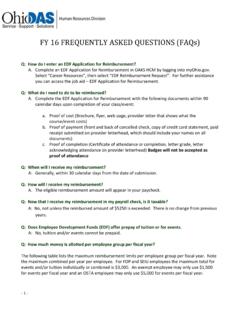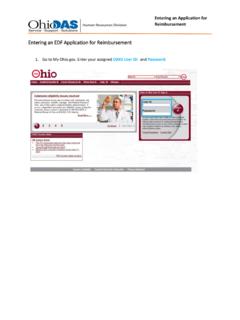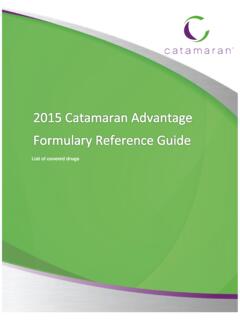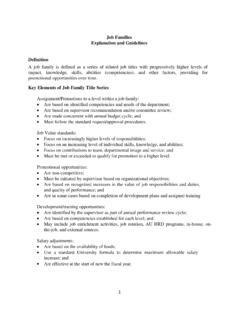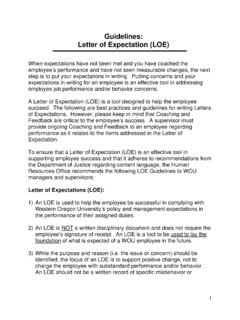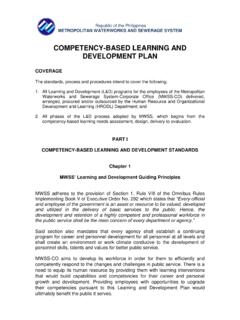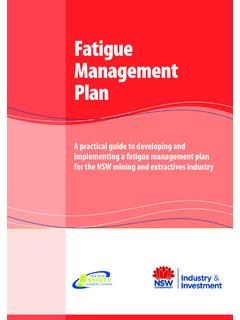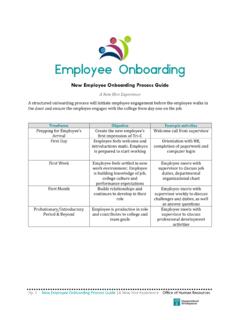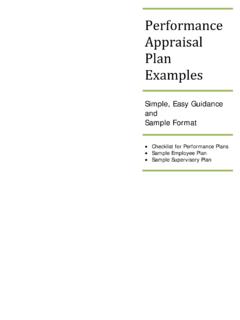Transcription of PERFORMANCE EVALUATION POLICY - Ohio Department of ...
1 Service, Support, Solutions for Ohio Government Page 1 of 10 PERFORMANCE EVALUATION POLICY POLICY NUMBER: 300-08 EFFECTIVE DATE: 01/03/2018 APPOINTING AUTHORITY APPROVAL: REPLACES POLICY DATED: 9/30/2009 AUTHORITY: ORC ; ORC ; OAC 123:1-29; OCSEA Collective Bargaining Agreement Article 22; SEIU/District 1199 Collective Bargaining Agreement Section I. POLICY This PERFORMANCE EVALUATION POLICY will ensure consistent application of the established guidelines and procedures of the ePerformance system and PERFORMANCE management process. employee step dates shall not be affected by the implementation of the annual PERFORMANCE EVALUATION cycle. The Office of employee Services (OES) has established the following procedures to facilitate the process and ensure that employees are evaluated on a fair and objective basis.
2 II. PROCEDURES REVIEW PROCESS Types of Evaluations Mid-Probationary: completed at the mid-point of a probationary period ( , 60 days for a 120-day probationary period of a permanent employee ). Final-Probationary: completed no later than the ending date of an employee 's probationary period. Annual: completed on an annual basis in accordance with the review process. Ad-hoc: completed upon obtaining prior approval from the Office of employee Services. Review Deadline Annual PERFORMANCE Evaluations: All non-probationary DAS employees shall have an annual PERFORMANCE EVALUATION cycle that begins on July 1 and ends the following June 30, notwithstanding all employees within the Administrative Services Division, Office of Finance which shall have an annual PERFORMANCE EVALUATION cycle that begins August 1 and ends the following July 31.
3 PERFORMANCE EVALUATIONS 300-08 Service, Support, Solutions for Ohio Government Page 2 of 10 Probationary PERFORMANCE Evaluations: The annual PERFORMANCE EVALUATION cycle shall not apply to employees in either an initial or promotional probationary period, or trial period. Upon successful completion of the probationary or trial period, the employee s EVALUATION will be aligned with the annual PERFORMANCE EVALUATION cycle listed in paragraph The internal deadline date assigned for mid-probationary or trial period evaluations is no later than ten (10) working days after the ending date. The internal deadline date assigned for final probationary or trial period evaluations is no later than ten (10) working days prior to the probationary period ending date.
4 development OF PERFORMANCE CRITERIA Establishing PERFORMANCE Criteria The supervisor (rater) shall schedule a PERFORMANCE expectations conference with the employee prior to the start of the PERFORMANCE EVALUATION cycle. During this meeting, the supervisor and employee will discuss and develop the PERFORMANCE criteria (competencies and goals) by which the employee will be evaluated over the review cycle. Following the meeting, the supervisor (rater) will develop and set the PERFORMANCE expectations by which the employee will be evaluated. There is one (1) statewide competency Customer Focus built into ePerformance. Each DAS employee must be rated on the Customer Focus competency. There is one (1) agency level competency Interpersonal Relationships built into ePerformance.
5 Each DAS employee must be rated on the Interpersonal Relationships competency. Each employee will be evaluated on a minimum of three (3) classification competencies. The supervisor (rater) and employee may agree to utilize the specific classification competencies that have been pre-selected in the system, or can choose to utilize other competencies that appear within the system. Each employee is required to have at least one (1) goal/ PERFORMANCE expectation entered into the system. These goals/ PERFORMANCE expectations should only reflect the most critical aspects of job PERFORMANCE . Limiting goals and PERFORMANCE expectations to five (5) or fewer would likely work for many jobs. The position description is reviewed and updated with any changes for the next rating period.
6 PERFORMANCE EVALUATIONS 300-08 Service, Support, Solutions for Ohio Government Page 3 of 10 Setting / Communicating PERFORMANCE Criteria Following the PERFORMANCE expectations conference between the supervisor (rater) and employee , the supervisor (rater) shall communicate their expectations and goals to their employees and enter the criteria into the ePerformance system prior to the start of the PERFORMANCE EVALUATION cycle. The supervisor (rater) should explain to the employee how the expectations and goals relate to the agency/division/office purpose. The supervisor (rater) should explain and provide in writing what specific actions and behaviors will be required for the employees to receive a Meets Expectations and Exceeds Expectations within their PERFORMANCE expectations ( , goals and competencies).
7 Anytime the PERFORMANCE expectations ( , goals and competencies) change, the supervisor (rater) should discuss those changes with the employee as soon as possible and provide those changes in writing. OBSERVING AND PROVIDING FEEDBACK ABOUT JOB PERFORMANCE Observing Job PERFORMANCE Supervisors (raters) are expected to observe and record employee job PERFORMANCE on a consistent and frequent basis. When observing employee job PERFORMANCE , the supervisor (rater) should be doing the following: Look and listen for specific actions and words that demonstrate something about an employee s PERFORMANCE . Observe as many details as possible. Collect information from multiple sources if possible ( , direct observation, reports from coworkers or customers, inspection of work products).
8 Avoid comparing the employee s past job PERFORMANCE when observing current PERFORMANCE . Avoid allowing the situation or setting to influence your observations. Avoid evaluating the PERFORMANCE while you are observing it. It is important to make many observations of job PERFORMANCE over a long period of time. To assist in the observation process, the supervisor (rater) should consider keeping a PERFORMANCE log for each employee . These logs PERFORMANCE EVALUATIONS 300-08 Service, Support, Solutions for Ohio Government Page 4 of 10 should include descriptions of employees actions and words, not evaluations of their PERFORMANCE . This will assist in recalling the employees actual behaviors when the supervisor (rater) is ready to evaluate the employees overall PERFORMANCE .
9 Providing Feedback Supervisor s (raters) are expected to provide regular feedback so the employee can adjust their PERFORMANCE to meet the documented PERFORMANCE criteria. All feedback provided should: Be timely. Provide feedback as close to when observed as possible. Be specific. Detailed examples are more likely to be accepted by employees. Be a regular occurrence. Supervisors aren t required to hold a formal meeting to provide PERFORMANCE feedback, but should provide some form of feedback at least a few times a month. Ensure the focus is on aspects of job PERFORMANCE that are in the employee s control to change. Recognize and respect individual employee preferences in receiving feedback ( , face-to-face or written; group setting or privately). Remember to provide feedback about an employee s strengths.
10 Feedback about strengths may improve PERFORMANCE more than feedback about weaknesses. COMPLETION OF THE employee PERFORMANCE EVALUATION The supervisor (rater) shall schedule a PERFORMANCE review conference with the employee no less than thirty (30) to sixty (60) days prior to each employee s EVALUATION due date to discuss the employee s EVALUATION . At this meeting, the rater and employee will discuss, at a minimum, the criteria that will be used to rate the employee . This information should be a review of the information that was agreed upon during the PERFORMANCE expectations conference (at this point in the process, the supervisor should not present an employee with a completed EVALUATION form for signature). employee PERFORMANCE expectations (including applicable goals and competencies) for the current rating period are discussed.
